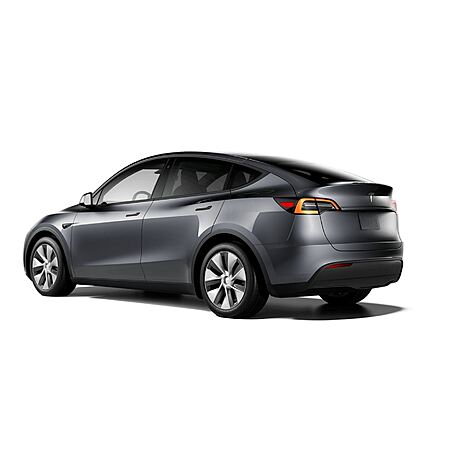https://www.tesla.com/modely/design#overview
Tesla Model Y
Dual Motor
All-Wheel Drive
Range: 330mi
Top Speed: 135 mph
0-60 mph: 4.8 seconds
Qualify for $7500 Federal Tax Credit with below income cap:
Adjusted Gross Income Limitations
$300,000 for married couples filing jointly
$225,000 for heads of households
$150,000 for all other filers
QA Note: List Price Drop
Rear-Wheel Drive is $43,990
Dual Motor AWD Long Range is $48,490 Now $48,990
Extra Discount for already built ones, change to your zip code and check
https://www.tesla.com/inventory/n...&range=100
Please use
the referral link [ts.la] when you purchase one. Thank you!





Leave a Comment
2,286 Comments
Sign up for a Slickdeals account to remove this ad.
You again keep misquoting what I actually said
I said that many live in single family detached homes. Which they do.
. But as I pointed out in my previous post, NOT ALL OF THOSE are single family.
I agree there's lying going on, but it ain't me.
Here's the US census confirming exactly what I wrote
https://www.census.gov/acs/www/ab...ion/rooms/
61.6 percent
Which is literally what I have been saying.
On TOP of that 61.5% you have the people who live in ATTACHED homes like townhouses that ALSO have driveways and garages where they can ALSO charge at home. Plus apartments where renters have garages.
So yes, a majority of Americans can charge at home
Like I already explained 3 times.
I suggest you go back and re-read the words I actually wrote and try to understand them,
It'll become more clear why they generally don't need to "improve" anything to charge their car in a rented detached single family home.
I specifically mentioned that.
Which means charging overnight (most folks are home more than 8 hours a day) gives you back about as much range as the average American drives in a day.
For the minority who drive significantly more you'd have to then winnow out those who can't use a dryer or oven plug on a switch before you FINALLY got to the even smaller minority who would need to install a new 240v plug anywhere, and then narrow THAT tiny group down to just the renters, before you could exclude anyone from the #s I cited. You'd still comfortably be in the majority of those who can charge at home though.
You are not at home on a road trip
So home charging speed wouldn't matter.
Wow.
Already explained, in some detail, how.
If you'd like to read it right from the IRS though here it is:
https://public-inspection.fede
Specifically
Proposed §§1.25E-3(e)(1) and 1.30D-5(d)(1) would provide the Federal income
tax treatment of a vehicle transfer election as to an electing taxpayer. Specifically, the
proposed regulations provide that the amount of the clean vehicle credit an electing
taxpayer may transfer as part of a vehicle transfer election can exceed the electing
taxpayer's regular tax liability (as defined in section 26(b)(1) of the Code) for the taxable
year in which the sale occurs, and the excess amount, if any, generally is not subject to
recapture
In other words, if you take the full $7500 point of sale credit, and then it turns out your tax liability for the year is less than $7500, they will not ask for the extra money you got back.
Effectively making the $7500 credit refundable.
Versus this year where if your liability is less than $7500 you lose however much less than $7500 that liability is of the credit.
In 2024 you get to keep 100% of the $7500 no matter how little liability you have.
Sign up for a Slickdeals account to remove this ad.
NC charges an extra $130 for lost fuel tax revenue (and hits plug in hybrids for same). Which is still less than you'd pay in actual total gasoline tax driving an average # of miles a year. YMMV by state though. (Plus of course the electricity at home is vastly cheaper than the cost of the actual gasoline)
You can see a list of each state and what they do here:
https://www.ncsl.org/energy/speci...c-vehicles
Open the first "read more" section and there'll be a list by state
However, the car is so much bette than the garbage BMW x4 because everything is automated. The shitty BMW still need the stupid key for unlock and lock.
You again keep misquoting what I actually said
I said that many live in single family detached homes. Which they do.
Again your fundamental claims are factually wrong.
I agree there's lying going on, but it ain't me.
Here's the US census confirming exactly what I wrote
https://www.census.gov/acs/www/ab...ion/rooms/ [census.gov]
The MAJORITY of ALL housing units in the US are detached single family homes
Which is literally what I have been saying.
On TOP of that 61.5% you have the people who live in ATTACHED homes like townhouses that ALSO have driveways and garages where they can ALSO charge at home. Plus apartments where renters have garages.
So yes, a majority of Americans can charge at home
Like I already explained 3 times.
That your claim was so fundamentally wrong then is kinda scary to whomever you work for.
Yes, people who don't know what they're talking about often laugh when confused.
I suggest you go back and re-read the words I actually wrote and try to understand them,
It'll become more clear why they generally don't need to "improve" anything to charge their car in a rented detached single family home.
None of which they'd need to do unless they drive a significantly above average number of miles a day and have neither an electric dryer or oven in the home either.
Yes.
I specifically mentioned that.
Which means charging overnight (most folks are home more than 8 hours a day) gives you back about as much range as the average American drives in a day.
For the minority who drive significantly more you'd have to then winnow out those who can't use a dryer or oven plug on a switch before you FINALLY got to the even smaller minority who would need to install a new 240v plug anywhere, and then narrow THAT tiny group down to just the renters, before you could exclude anyone from the #s I cited. You'd still comfortably be in the majority of those who can charge at home though.
Dude.
You are not at home on a road trip
So home charging speed wouldn't matter.
Wow.
Secondly, you are OBFUSCATING between two separate concepts:
1. The percentage of Americans who own their own homes AND
2. The proportion of single homes as a percentage of HOUSE SUPPLY
My point ALWAYS WAS that the fraction of Americans who can install a charger have to satisfy BOTH of these conditions. So the proportion of Americans who can have a EV that satisfy their need is NOT THE VAST MAJORITY. Many cannnot install because they don't satisfy either of these conditions. Instead of countering that point, you wasted my time regurgitating the SAME census data which again, I know far better than you. Nowhere did you for example, point out what percentage of those single family homes (that data of which I posted as well) is owner-occupied. And since you still haven't gotten this concept, have the brick wall explain it to you, because the brick wall got it.
Your "electric dryer in the own" claim is hilarious too. I'll go with an example. My weekday place in New York, it's a co-op. Space is at a real premium, not just width, but length too. Forget about wiring and all that good stuff, just to install a charger, you need an additional couple inches of space, PER CAR. Oh, and I don't have a (gasp) dryer in the shared garage either. See what just happened? I OWN a home that is not single family. But at least I have a garage. Most apartment buildings in New York DON'T have a garage. Where do they install the charger?
I just visited Boston. Guess what, whether Boston itself, Cambridge, Belmont, Summerville, etc, not just the apartments but single family and townhouses as well, and forget about garages, most don't even have DRIVEWAYS where you can install your own charger. They get city permits to PARK ON THE STREET. Where do they install their charger? Chicago, Philadelphia, Detroit. Plenty of places in America, EXACTLY THE SAME THING. Where do they install their chargers? Where do they plug in their glorious 240V NEMA?
Oh and by the way, at least according to the Federal Highway Association, charging 8 hours (24 miles) overnight WOULDN'T give you as much as an American drives a day, which is 37 miles, so you're pretty much wrong there as well.
And even after 250,000+ miles if u really need a new battery, since Tesla keeps adding features to existing cars, it might be a worthwhile investment (new battery)
Secondly, you are OBFUSCATING between two separate concepts:
1. The percentage of Americans who own their own homes AND
2. The proportion of single homes as a percentage of HOUSE SUPPLY
My point ALWAYS WAS that the fraction of Americans who can install a charger have to satisfy BOTH of these conditions. So the proportion of Americans who can have a EV that satisfy their need is NOT THE VAST MAJORITY. Many cannnot install because they don't satisfy either of these conditions. Instead of countering that point, you wasted my time regurgitating the SAME census data which again, I know far better than you. Nowhere did you for example, point out what percentage of those single family homes (that data of which I posted as well) is owner-occupied. And since you still haven't gotten this concept, have the brick wall explain it to you, because the brick wall got it.
Your "electric dryer in the own" claim is hilarious too. I'll go with an example. My weekday place in New York, it's a co-op. Space is at a real premium, not just width, but length too. Forget about wiring and all that good stuff, just to install a charger, you need an additional couple inches of space, PER CAR. Oh, and I don't have a (gasp) dryer in the shared garage either. See what just happened? I OWN a home that is not single family. But at least I have a garage. Most apartment buildings in New York DON'T have a garage. Where do they install the charger?
I just visited Boston. Guess what, whether Boston itself, Cambridge, Belmont, Summerville, etc, not just the apartments but single family and townhouses as well, and forget about garages, most don't even have DRIVEWAYS where you can install your own charger. They get city permits to PARK ON THE STREET. Where do they install their charger? Chicago, Philadelphia, Detroit. Plenty of places in America, EXACTLY THE SAME THING. Where do they install their chargers? Where do they plug in their glorious 240V NEMA?
Oh and by the way, at least according to the Federal Highway Association, charging 8 hours (24 miles) overnight WOULDN'T give you as much as an American drives a day, which is 37 miles, so you're pretty much wrong there as well.
Sign up for a Slickdeals account to remove this ad.
Leave a Comment